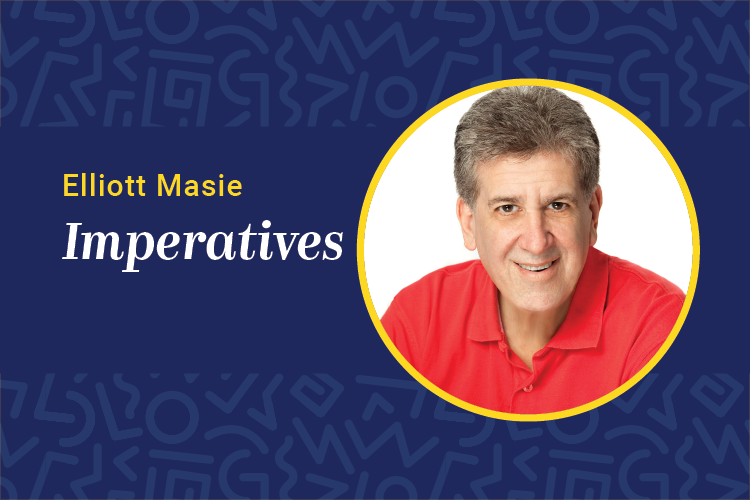Sit next to me on a plane and ask what I do for a living. I’ll say I am in the learning field. You will immediately try to guess if I am a college professor, a high school principal, a third grade teacher or perhaps a corporate CLO.
On the ground, what each of those professions do is quite different. A third grade teacher may spend six hours a day, five days a week, 45 weeks a year with the same 24 students. A college professor may spend three hours a week in a classroom or in an online webinar with a group as small as five or as large as 800, followed by office hours, assignments, final papers, exams and the assignment of grades. A corporate trainer may lead a three-hour on-boarding session or an intensive 12-hour-a-day leadership retreat that lasts five days.
Yet, zoom out to the 3,000-foot-high level and we each face similar issues, challenges, opportunities, changes and research questions:
• Learning technologies: How will we design learning using emerging technologies, including mobile, tablets and simulation systems?
• Collaborative and social learning: How will we leverage the power of collaborative learning activities to support mastery and performance?
• Learning styles: What types of learning work best for which topics and for specific types of learners.
• Measurement and outcomes: How do we most effectively measure learning, teaching, transfer and impact?
• Skill bridges: How can employers articulate highly specific skill requirements so colleges and high schools can target their programs?
• Learning systems: How do we apply what higher education is learning to corporate learning systems? How do we experiment with open source and non-learning-specific systems to support educational and talent efforts?
A good example of our similarities can be found in social learning. While talking about social learning in corporate settings is somewhat new, our colleagues in elementary schools have been working on and researching this for decades.
Two colleagues of mine, David Johnson and Roger Johnson from the University of Minnesota, have conducted more than 30 years of research on the effectiveness of specific teachings. Their work, and that of others in the field, points to high-impact ways in which content can be designed for collaborative/social learning, with documented spikes in mastery and understanding.
For example, there is a classroom technique called jig-sawing that segments a knowledge topic into smaller sets. Groups of three students master each set and then teach it to the remainder of the group. Research shows that this enhances cognitive mastery and lowers the need for teacher remediation.
But, the literature on social learning in the corporate field almost always ignores the research from elementary schools and poses social learning as a child of Internet innovation. I believe many who promote new models, such as social, collaborative or even mobile learning, do not want to give credit to sources outside of the innovation bubble.
We must stop this silliness and build bridges among higher education, K-12 and corporate learning. If we are truly learning professionals, we must scan every related field for knowledge, practice and applicability — even if it is not labeled corporate learning.
We must look at research, practices and even tools that have been born outside of corporate learning that might have a huge implication in our world. For example, we have been experimenting with open-source tools that are primarily K-12 and higher-ed based that can be easily adapted — without cost or consultants — for the workforce learning field.
The most unique thing about the human species is our ability to learn — at every stage, turn and moment of our lives. Lifelong learning is not just a phrase. There are practices, innovations and methods that will span our lifetimes of learning. And, there are organizational strategies and approaches that can be well informed by our colleagues in the other sectors of education.
I wish every college professor and high school teacher had the opportunity to spend time in a corporate learning department. And, I wish we had increased roles for corporate learning professionals on school boards and in the classrooms of our schools.
Elliott Masie is the chairman and chief learning officer for The Masie Center’s Learning Consortium. He can be reached at editor@CLOmedia.com.















